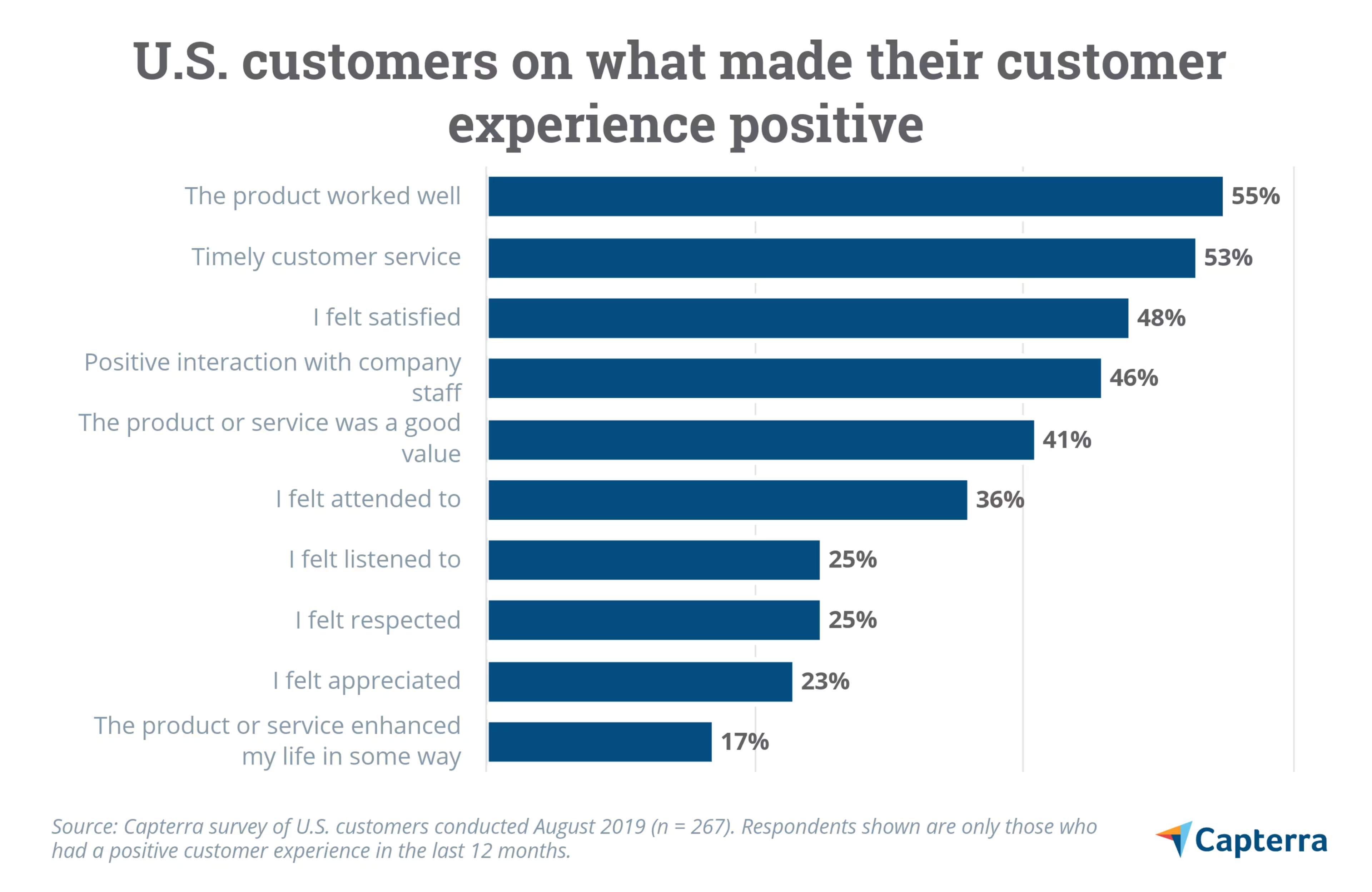What makes a good customer experience? What makes a bad one? The results of our customer experience survey let you learn from the customers themselves.

I've got good news and bad news for customer experience (CX) professionals.
The good news: In a recent Capterra survey of Americans who've made an in-store or online purchase in the past year, 91% of respondents report having a positive customer experience.
The bad news: About half (45%) of respondents report having at least one negative customer experience in the past 12 months.
What made these experiences good or bad? Majorities of all major demographic groups reported having had a positive customer experience in the past 12 months. But when it comes to negative customer experiences, there is variation. For example, respondents with higher household incomes were more likely to say they had a negative experience in the past year.
Why should you care about our customer experience survey?
In this first part of our three-part series, we'll look at common reasons behind positive and negative CX, and dive into demographic differences within those reasons.
Look for high-level trends on what your customers need to feel satisfied in their experiences, as well as areas you may need to consider improving. If your business has a clear customer demographic, pay particular attention to that group's preferences below.
What makes a positive customer experience?
We asked respondents who had a positive CX what made a particular encounter a good one. Roughly half cited the product working well (55%) or timely customer service (53%). This is true for all major demographic groups.
Other top reasons include generally feeling satisfied (48%) or positive interactions with company staff (46%).

Women were more likely than men to cite feeling satisfied (56% vs. 39%) or positive staff interactions (56% vs. 38%) as the reason behind their positive CX. Women were also more likely than men to say their experience was positive because they felt listened to (32% vs. 20%).
Though a less common reason overall, there were some demographic differences in respondents who said their experience was positive because the product or service was a good value. White customers and buyers living in suburban areas were more likely to cite this than other racial or ethnic groups and those living in urban or rural areas, respectively. Citing value as a reason for positive CX was also more common among respondents aged 36 to 55 versus younger adults.
Overall, roughly a quarter of customers with positive experiences cited feeling listened to, respected, and/or appreciated as what made their experience great, while 17% cited the product or service enhancing their life in some way.
What makes a negative customer experience?
We asked respondents who had a negative CX what made a particular encounter less than ideal. About half cited slow customer service (49%), the product not working well (47%), or general dissatisfaction (47%).
Not feeling respected, listened to, or appreciated were lower on the list of negative customer experience causes, along with the product or service not enhancing customers' lives.

Overall, there were few demographic differences in reasons for negative CX. Young adults (aged 18 to 35) were more likely than older adults to cite slow customer service as a primary aggravation (53% vs. 32%).
White customers were more likely than black customers to cite not feeling respected as a reason for a negative customer experience (39% vs. 9%). And those in the suburbs were more likely to say not feeling attended to was a problem in their experience.
What does this mean for your business?
You can certainly take practical steps based on our survey results. For example: If your customer base includes a high percentage of female customers, you may want to invest more in staff training to ensure positive interactions.
But there's an overall key takeaway here that you don't want to lose.
Most customers aren't looking for products or services to change their lives, but they do want products that work well, fast customer service, and positive interactions with the company. They want to feel satisfied.
If you're not sure what that looks like for your customers, consider customer experience or customer feedback software to gather insight.
More survey results ahead
This is the first in our three-article series on key findings from our year in customer experience survey.
In the coming days, we'll look at what channels customers used for customer service interactions, whether those interactions were positive or negative, as well as what customers prefer for customer service and other company interactions.
In other words: We're starting with where customers have been in the past year, and we'll finish up with where they'd like companies to go. Stay tuned.